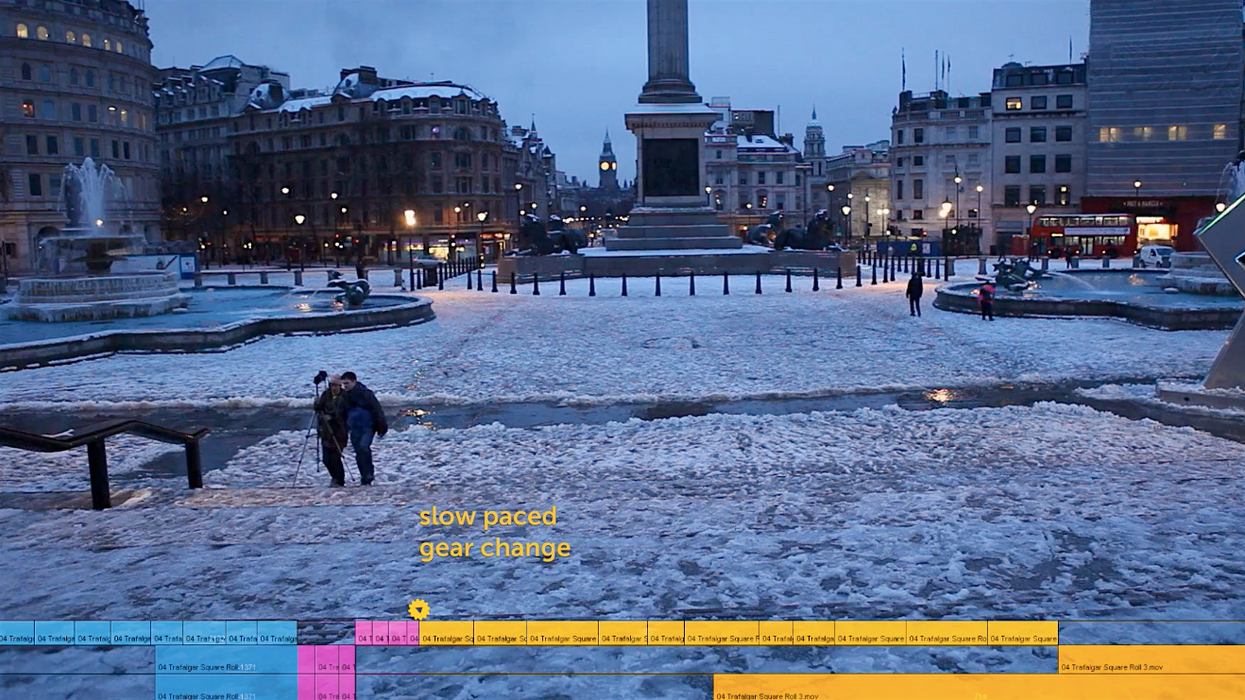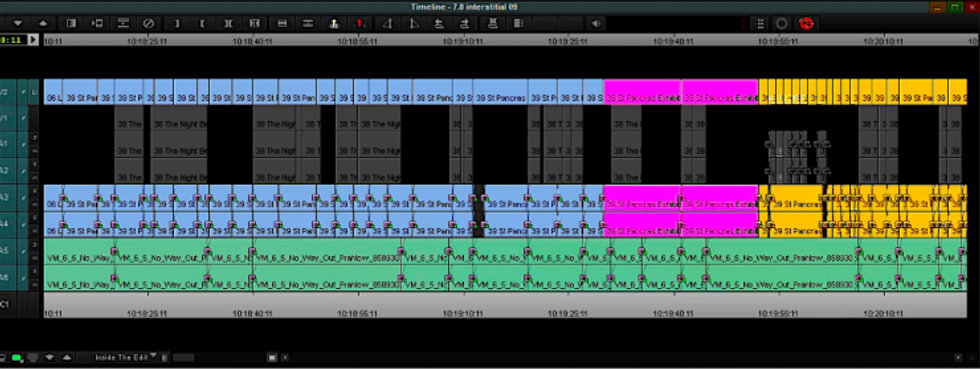How to Manipulate the Pace of Your Editing to Infuse Drama & Tension Into Any Scene
When you suddenly shift from slow, languidly-paced editing to quick, frenetic cuts, what emotional impact does that have on the audience?

In celebration of Inside The Edit's holiday promotion where you can save 25% off a subscription (more details below), the course's founder Paddy Bird is releasing a pair of high-quality tutorials that should help you to take your editing skills and creativity to the next level.
Today's tutorial is all about pacing. Not so much about how to pace a scene, but how to shift the pacing for dramatic effect. So without any further ado, here's Paddy to demonstrate a creative technique that he calls "Gear Changes." This is a direct excerpt from his world-class creative editing course. I hope you enjoy it:
Here's what a gear change might look like on a timeline. The blue clips are indicative of the scene's original pacing, which is a bit slower, and the orange clips show the pacing after the gear change has occurred. Lastly, in order to emphasize the moment in which the dramatic shift in tempo happens, the pink clips are even slower.
Like all aspects of filmmaking, this is a technique that you should use intentionally to highlight an important change in your characters, their journey, or their emotional state.
In case you need a refresher on Inside The Edit, I interviewed Paddy when the course first became available, and have shared fantastic excerpts from the course. Needless to say, I believe wholeheartedly in what Paddy has built, and I think that aspiring editors owe it to themselves to try the program.
If you're interested in the entire course, you can save 25% on a monthly, yearly, or lifetime subscription by entering the promo code "UPPM2015" at checkout. If you choose the monthly option, however, the discount will only apply to the first month's payment. For that reason, the yearly and lifetime memberships are definitely the better bargain in this case. The promotion is running through the 31st of December.
Have you guys used dramatic changes of editing tempo in your own work, or have you noticed it in any of your favorite films? Tell us about them down in the comments, and be sure to keep your eyes out for the second tutorial in this series, which will be released later this month!
Source: Inside The Edit











![Ethos, Pathos, Logos: 20 Effective Ways to Advertise [Infographic]](https://nofilmschool.com/media-library/ethos-pathos-logos-20-effective-ways-to-advertise-infographic.jpg?id=34064614&width=600&height=600&quality=90&coordinates=560%2C0%2C0%2C0)

